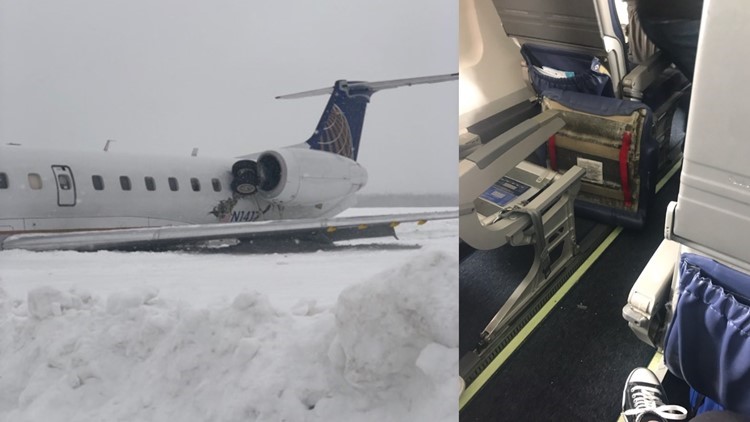PRESQUE ISLE, Maine — The pilots of a regional jet that missed a runway in northern Maine failed to visually determine the location of the landing strip while relying on faulty electronic location data, federal investigators said.
Several other pilots noticed faulty location data but failed to notify CommutAir, operator of the United Express flight, before the violent landing at Presque Isle International Airport, the National Transportation Safety Board said this week in its final report.
The jet missed the runway altogether and came to a rest in snow alongside the landing strip on March 4, 2019. Three of the 31 passengers and crew members suffered minor injuries.
An NTSB review afterward showed the instrument landing system that was supposed to guide planes to the runway was out of tolerance by about 200 feet (60 meters) to the right of the runway.
The pilot and first officer aborted their first landing attempt because they couldn’t see the runway. They again failed to properly locate the runway on the second attempt in which the 50-seat Embraer EMB145 landed forcefully, causing heavy damage to the plane. The wheels on the left side of the plane were ripped off and wound up wedged against one of the engines.
The NTSB report indicated at least six pilots previously encountered the misalignment of the electronic landing system data in the five days before the hard landing but none of them filed a company safety report with their employer, Ohio-based CommutAir, before the incident.
The Federal Aviation Administration did receive a single report, but there was no corroboration from a second flight that’s necessary to prompt action on a potential navigational problem.
The NTSB report blamed the pilots for attempting to land without visually confirming the runway was in sight. The NTSB said the captain, whom it didn’t identify, showed poor judgment and her training records “revealed deficiencies regarding her piloting abilities.”
Contributing factors were the first officer’s fatigue and failure of previous pilots to report the faulty location readings, the report said.
CommutAir said in a statement that it agreed with the NTSB findings, and that it has taken “significant” steps to improve safety. That includes consolidating training at a state-of-the-art facility in Houston.
It didn't immediately say whether the pilots were still employed.
The Federal Aviation Administration issued a directive the following year, alerting airports that snow cover could affect navigational instruments and offering recommendations to airport operators.



